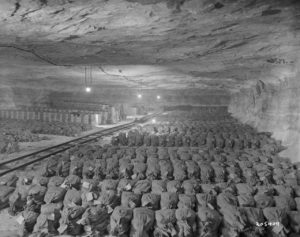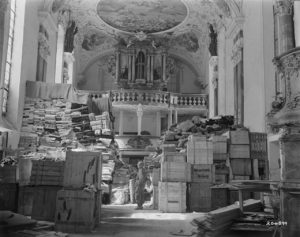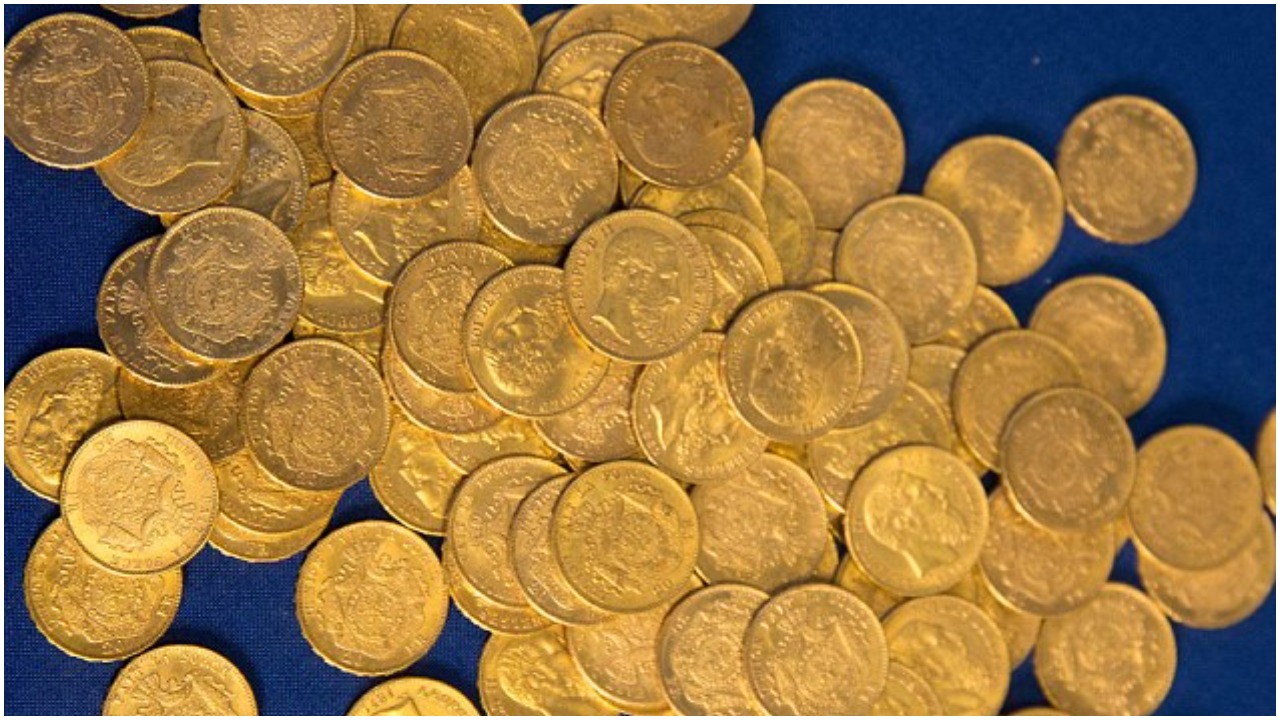An archaeologist using a metal detector discovered a buried stash of stolen gold coins from Nazi-era Germany. Experts believed the coins were buried near the end of World War II.
Florian Bautsch was using a metal detector near a tree near Luxembourg when the detector “began going mad in my hand.” Bautsch immediately knew that he had found something of significance.
He found 10 gold coins in an envelope embossed with a Nazi swastika and eagle. The work “Reichsbank” was inscribed on the envelope. He found the envelope in a hole one meter deep.
He immediately informed authorities of his find. Experts then unearthed an additional 207 coins. The experts believe that the coins are of French, Belgian, Italian and Austro-Hungarian origins.
It is believed that the coins were stolen from the Deutsche Reichsbank near the end of the war. Deutsche Reichsbank was the central bank for Nazi Germany.
Mario Pahlow is a local archaeologist who believes that the coins were part of the bank’s gold reserves. He said the fact that the coins were buried indicates that they were likely stolen.
The pine tree they were found under is about 50 years old and grew up after the coins were already buried.
A chemical analysis of the coins shows that they were most likely packaged between 1940 and 1950. Analyzing the metals in the seals shows that the seals were made after 1940.
This all leads the archaeologists to believe that the coins were buried near the end of the war.
Edgar Ring is an archaeologist at Museum Lueneburg. He believes that whoever took the coins must have been an insider with access to the money as an official of the bank or someone who had access when the coins were being transported.
When the Allies began bombing Berlin, the Reichsbank transported large amounts of gold, silver and money to secret locations throughout Germany.
The majority of the uncovered coins were minted between 1850 and 1910. The oldest coins are from 1831.
Pahlow says that the coins are in excellent condition and are worth between €190 (£132, $223) and €210 (£146, $247) each. That would place the value of the entire collection at around €45,000 (£31,335, $52,840), though he warned that it was more difficult to place a value on the historical value of the find.

For context, Pahlow said that one of the coins would have bought a very nice suit including the waistcoat and top hat.
Bautsch received €2,500 (£2,200, $2,935) for the discovery. He said that the advancement of knowledge was more important to him than the money.
The coins are currently on display at the Museum Lueneburg.
Luxembourg was occupied by Germany beginning on May 10, 1940. The royal family immediately went into exile and encouraged the Luxembourg resistance from relative safety in London.

Meanwhile the Germans began annexing Luxembourg into the Reich. Policies were put in place to integrate the people into the Nazi regime. The French language was banished, anything related to the previous government was removed and a propaganda campaign was undertaken to promote Nazism to the people.
Another Article From Us: Beaufighter Discovered by Couple Walking on the Beach
The country was liberated on September 10, 1944. The German’s launched a counter attack in December of 1944 known as the Battle of the Bulge.
The Allies managed to withstand the attack which allowed the royal family to return on April 14, 1945. The war ended on May 8, 1945, when the Germans unconditionally surrendered to the Allies.
